MAC Lipstick Group Project PDF

| Title | MAC Lipstick Group Project |
|---|---|
| Author | Michelle wee |
| Course | Buyer Behaviour |
| Institution | Royal Melbourne Institute of Technology |
| Pages | 34 |
| File Size | 1.6 MB |
| File Type | |
| Total Downloads | 33 |
| Total Views | 125 |
Summary
Download MAC Lipstick Group Project PDF
Description
Bachelor of Business (Marketing) MKTG 1052: Buyer Behaviour GROUP ASSIGNMENT – LF 02 GROUP 03 MAC LIPSTICK
Local SIM Lecturer: FOO HEE LUAN
Done By: Nicholas Lim Jun Wei S3591630 Bernice Tang Jing Yi S3591702 Siti Hasunah Binte Yakob S3591087 Nur Diyanah Binte Zulkiflee S3591059 Ahmad Bin Najip Bamadhaj S3531236
TABLE OF CONTENTS
1. Introduction----------------------------------------------------------------------------------PG 5 1.1 Size of Market-------------------------------------------------------------------------------PG 6 1.2 Market Positioning-------------------------------------------------------------------------PG 6 1.3 Product Line--------------------------------------------------------------------------------PG 6 1.4 Product Life Cycle-------------------------------------------------------------------------PG 7 2. Competitors---------------------------------------------------------------------------------PG 7 2.1 Direct Competitors------------------------------------------------------------------------PG 7 2.2 Indirect Competitors----------------------------------------------------------------------PG 7 2.3 Positioning---------------------------------------------------------------------------------PG 8 2.4 Niche Player-------------------------------------------------------------------------------PG 8 3. Identification of Target Market(s) ----------------------------------------------------PG 9
3.1 Primary Target Markets------------------------------------------------------------------PG 10 3.2 Potential Market Segment----------------------------------------------------------------PG 11 4. External Influence-------------------------------------------------------------------------PG 12 4.1 Culture and Subculture-------------------------------------------------------------------PG 13 4.2 Demographics------------------------------------------------------------------------------PG 13 4.2.1 Age Influence-----------------------------------------------------------------------------PG 13 4.2.2 Gender Influence-------------------------------------------------------------------------PG 13 4.2.3 Socio-economic Influence---------------------------------------------------------------PG 13 4.3 Reference Group Influences---------------------------------------------------------------PG 14 4.3.1Informational influence---------------------------------------------------------------------PG14 4.3.2Identification Influence--------------------------------------------------------------------PG 15 5. Internal Influence----------------------------------------------------------------------------PG 16 5.1 Needs and Motives---------------------------------------------------------------------------PG 16 5.2 Perception------------------------------------------------------------------------------------PG 16 5.2.1 Exposure------------------------------------------------------------------------------------PG 16 5.2.2 Attention------------------------------------------------------------------------------------PG 17 5.2.3 Interpretation-------------------------------------------------------------------------PG 17 5.2.4 Memory--------------------------------------------------------------------------------PG 18 5.3 Learning---------------------------------------------------------------------------------PG 18 5.4 Lifestyle----------------------------------------------------------------------------------PG 18 6. Consumer decision making processes----------------------------------------------PG 19 6.1 Considerations--------------------------------------------------------------------------PG 20 6.2 Evaluation-------------------------------------------------------------------------------PG 20 6.3 Shopping---------------------------------------------------------------------------------PG 21 6.4 Post Purchase---------------------------------------------------------------------------PG 21 6.5 Disposal----------------------------------------------------------------------------------PG 22 6.6 Loyalty------------------------------------------------------------------------------------PG 22 7. Marketing Strategy---------------------------------------------------------------------PG 23 7.1 Comparison of Marketing Mix Overview of M.A.C and NARS-------------------PG 23
7.1.1 Product---------------------------------------------------------------------------------PG 24 7.1.2 Price------------------------------------------------------------------------------------PG 25 7.1.3 Promotion-----------------------------------------------------------------------------PG 25 7.1.4 Place-----------------------------------------------------------------------------------PG 26 8 Evaluations-------------------------------------------------------------------------------PG 27 9 Recommendations-----------------------------------------------------------------------PG 27 9.1.1 Product Positioning------------------------------------------------------------------PG 27 9.1.2 Product Enhancements--------------------------------------------------------------PG 28 9.1.3 Improved Marketing Communications--------------------------------------------PG 28 9.1.4 Improved Purchase Experience----------------------------------------------------PG 28 9.1.5 Identifying New Potential Customers---------------------------------------------PG 29 9.1.6 Enhancing Customer Satisfaction-------------------------------------------------PG 29 10. Conclusion-----------------------------------------------------------------------------PG 30 References---------------------------------------------------------------------------------PG30 – PG 32
1. Introduction This research report seeks to analysis the impact of buyer behaviour on marketing strategies through our chosen product, M.A.C’s range of matte lipsticks, with particular reference to the shade, M.A.C Velvet Teddy which is one of its bestselling lipstick worldwide. The other brand that we have identified of similar standing and product offering whom is a direct competitor of ours is NARS with reference on the same shade, NARS Peloponnese.
1.1 Size of Market
In Singapore, the colour cosmetics industry which lipsticks belong to witness a growth of 4% to reach a total of $221million in 2015 and is expected to grow further fuelled by the rising consumer needs and wants for more beauty products (Euromonitor, 2016). The M.A.C lipstick brand by Estee Lauder is currently the market leader for lip products in Singapore with 8.3% market share as shown in Table 1.
1.2 Market Positioning M.A.C is a professional level make-up retailer that aims to be the world’s leading make-up authority among professional make-up artists and consumers.
As positioning a brand is an important part of a business strategy (DiMingo, 1987), M.A.C positions itself with its slogan being “All ages, All races, All sexes” which portrays complete accessibility to their items by any individual who appreciates beautifying themselves through make-up without any discrimination. Additionally, they differentiate themselves by being one of the few brands in the market that has colours throughout its range of products to match every skin tone with value-based prices in the mid-range for the masses (M.A.C., 2016).
1.3 Product Line M.A.C’s line of cosmetics includes eye shadows, blushes, lip colours, lip pencils, foundations, concealers, colour palettes and lipsticks (M.A.C., 2016). Its most well-known product, M.A.C matte lipsticks is a special entity with hundreds of hues to choose that are able to produce the desired shade, define and flaunt lips. One of their bestselling shades is Velvet Teddy. Its deep-tone beige with matte finish is suitable for occasions or everyday wear and constantly sold out in stores coupled with high ratings throughout all makeup review websites. Additionally, the matte collection on a whole is proven to be extremely long lasting which is an advantage for consumers who wants their lipstick to stay on for the whole day.
1.4 Product Life Cycle The product life cycle for M.A.C’s range of matte lipsticks is considered to be at the growth stage as M.A.C is still trying to establish it firmly as the market leader against its increasing competitors within the growing lipstick market that is expected to grow further.
2. Competitors 2.1 Direct Competitors The direct competitors that M.A.C faces for its range of M.A.C lipsticks which is similar in terms of size, price, quality, brand name and accessibility are brands like NARS, L’Oreal, Christian Dior, Lancome and Clinque.
2.2 Indirect Competitors The indirect competitors that M.A.C faces are those that offer different products which meet the same needs of a lipstick, which is to glamour and beautify one’s lips such as lip stain, lip gloss, lip liner and lip sets. The above mentioned products are sold through brands such as Sephora, Maybelline and Revlon.
2.3 Positioning M.A.C positions its matte range of lipsticks as of the highest quality, endorsed and used by professional make-up artist on celebrities but priced affordably to masses which are reflected in their value-based mid-range pricing in the consumer market of lipsticks. To stand out from its competitors and be perceived as being high-end, M.A.C lipsticks are only sold in 11
exclusive stores located island wide in upmarket malls such as ION Orchard and Raffles City in Singapore (M.A.C., 2016).
2.4 Niche Player Wardah beauty from Indonesia is currently one of the biggest and leading niche players in the halal cosmetics market which offers a range of products for Muslims according to Islamic rulings (FutureReadySingapore, 2016). The halal beauty segment is rapidly growing to meet the rising needs of increasingly fashionconscious Muslim women being tied by religious rules, therefore the halal cosmetics sales is expected to grow 15% annually in future to cater to the growing Muslim population (Marketline, 2014).
3. Identification of Target Market(s) 3.1 Primary Target Markets
Demographics and Psychographics
Behavioural
3.2 Potential Market Segment
4. External Influence
4.1 Culture and Subculture With relation to environmental-orientated values, the potential target market segment is identified to be interested in trying the latest innovative products which classifies them under the ‘innovator’ and ‘early adapter’ group. They are the likely first few to try out new products and have the ability to influence others with their opinions and reviews. They are known to be the opinions leaders for their family members, friends, colleagues and others who might be interested about the product. The target segment can be categorised under self-oriented values as they have ownership towards their cosmetics products which is considered affordable for the increasingly educated millennium generation that have the spending power and disposable income to purchase affordable luxuries like cosmetics that meets their needs. Having an effective and value for money quality lipstick to beautify themselves would appeal to the targeted segment as they are affected by culture that emphasises on looking good (Goodstein, 1993). By owning a MAC lipstick, it promises glamour to younger women and offers older women a chance to look younger. This would enhance their social status when being seen using a premium lipstick brand like M.A.C and as a meticulous effort to stay fashion forward too.
4.4 Demographics
4.2.1 Age Influence In Singapore, the younger Generation Y are more technology savvy as compared to older Generation Y. Albeit both target segments are exposed to technology, one of the segment is superior than the other because of the differences in Internet usage since young, which eventually becomes a daily habit to surf the net. The younger Generation Y spends time surfing online about the latest products that M.A.C has launched and reviews to aid them in their independent purchase decision over the older generation that relies mainly on recommendations from cosmetics store staff or family and friends.
4.2.2 Gender Influence With the rising trend of make-up around the world, males in Singapore are becoming more conscious of their appearance. Hence, the different range of lipsticks M.A.C offers can be used for men too as practices that were previously considered feminine for men have generally become acceptable. However, our target segment is still focused on females as they will always be attracted to shop, buy and try on the latest products endorsed by popular celebrities due to their need for cognition (Waters & Zakrajsek, 1990).
4.2.3 Socio-economic Influence An increasing educated and informed population in Singapore will benefit the cosmetics industry as there will be a growing need for more innovative products to beautify an individual. With the expanding market, there will be a higher standard of living and disposable income which allow consumers to splurge more on affordable luxuries like cosmetics.
4.3 Reference Group Influences Reference group can influence consumer decisions as it provides opportunities to inform or create awareness among individual consumer. There are two types of reference group influences that we have identified in relation to Mac lipstick are informational and identification influences.
4.3.1 Informational Influence Consumers are influenced by their friends, family members, colleagues and even bloggers that share their knowledge and experience of the product. Word-of-mouth marketing allows better comparison across various brands lipsticks and it tends to have higher levels of trust and credibility as they are regarded as opinion leaders.
4.3.2 Identification Influence Identification influence, a value-experience influence occurs when consumers use their individual perceived values from the source of influences to determine their attributes and values (Hawkins & Mothersbaugh, 2010). The need to want to look good influences decisions when purchasing a M.A.C Velvet Teddy matte lipstick. Furthermore, the realisation of using M.A.C’s matte lipsticks together with their friends creates a behavioural response aiming to attain a sense of belonging within their group of friends while looking good together at the same time.
5. Internal Influence 5.1 Needs and Motives The motive of buying a lipstick is to fulfil the physiological needs under Maslow’s Hierarchy of Needs of looking glamourous and having beautiful lips (Maslow, 1970). Consumers have varying needs and motives coupled with different internal influences that will influence their buying motives. Based on McGuire’s psychological motives, motives for buyingg a lipstick will be cognitive growth motives or needs and the need for self-expression (Mcguire, 1976). MAC attracts their target segment that has a need for novelty which seeks a variety of functions and new innovation in their lipstick. It appeals to a need for self-expression as they are concerned with the beauty issues (Csikszentmihalyi, 2000). M.A.C constantly innovate new products and has popular celebrities to be their endorser to express the beauty effect of using a M.A.C lipstick to entice consumers.
5.2 Perception
5.2.1 Exposure The target segment of the younger Generation Y is technology savvy, exposed to the Internet daily and search for online reviews regularly before purchases. They are influenced by social media sites such as Facebook and Youtube. M.A.C utilises online media effectively to increase target segment exposure and engage them actively. M.A.C has a dedicated Facebook and Instagram page that shares make-up tips regularly, introduction of new and limited edition products including lipstick shades. MAC wide distribution channel includes stores being strategically located at every upscale mall around Singapore.
5.2.2 Attention ● Stimulus Factor MAC captures the attention of potential customers because of their unrivalled expertise in makeup artistry and the wide range of shades it is able to offer to consumers. Additionally, they have famous M.A.C endorsers such as Lady Gaga, Pamela Anderson and Ariana Grande. These beautiful ladies are famous celebrities that will naturally attract more consumers as consumers would want to buy M.A.C products to beauty themselves like those endorsers. ●
Individual Factor
Different consumers have different needs and interests when purchasing cosmetics products. Consumers will often search for information online regarding different lipsticks products or advertisements that will aid them to find one that meets their requirements. ●
Situational Factor
A consumer who does not browse the Internet will not be exposed to all of M.A.C’s social media platforms and the reviews provided. Likewise, a consumer who always makes online
purchases will never be exposed to in store promotions or be able to test the product which reduces its exposure. 5.2.3 Interpretation Interpretation is a ‘process of communication’ (Hall & McArthur, 1993). Interpretation can be defined as the process which involves cognitive component and affective responses. Emotional cues allow M.A.C to give its consumers the satisfactory feeling of having glamorous lips which would eventually urge the target segments to purchase M.A.C lipsticks.
5.2.4 Memory Since M.A.C lipstick is a fast moving shopping good, M.A.C should aim to have the target segment stablish their business brand firmly among the evoked set of lipstick products when making a purchase decision with information and past experiences they have about it in their memory. Hence, when it comes to their next purchase, Velvet Teddy lipstick will automatically come to their mind as an evoked set.
5.3 Learning Learning consists of high involvement learning or low involvement learning. Today, consumers are internet savvy thus they are willing to research on their products before purchase. The learning approach is conditioning whereby learning is based on stimulus and response. More reviews by social media influencers and celebrities should be made available to potential M.A.C consumers so that they are likely to purchase the product after reading.
5.4 Lifestyle
The younger female generation Y are more affluent and willingly to splurge. They are more knowledgeable and well-informed on lipsticks and often have the need to express hence they will share their reviews on social media with everybody. In addition, they will get influenced by comments of others while purchasing something and vice versa. Another lifestyle M.A.C focuses on is the older generation Y who is either married or the full nest stage 1. Despite being financially stable, they have limited disposable income due to family commitments. However, a M.A.C lipstick will still be considered affordable yet fulfil their needs of looking fashionably glamorous.
6. Consumer decision making processes 6.1 Considerations Consumers use external search to research about M.A.C’s matte range of lipsticks as seen from the analysis of the brand’s lipstick page under Maccosmetics.com, whereby keywords like “Mac Lipstick, Lipstick and Mac Matte Lipstick” were among the top hits used on search engines like Google to access M.A.C’s homepage about their matte lipstick when searching for additional information or reviews from consumers, bloggers or celebrities endorsers (Keyword, 2016). Sources of information for M.A.C Lipstick can be segregated into the following:
Purchase of a M.A.C Lipstick is considered low involvement with a simple evaluation process whereby the potential female market segment which M.A.C targets is familiar with what they are purchasing and do not consider lipsticks a costly item but more of a necessity to look good. Consumers are in the information search level of limited decision-making due to the low involvement in purchase, low to moderate price of lipsticks and they are seeking only minimal additional ext...
Similar Free PDFs

MAC Lipstick Group Project
- 34 Pages

IMS506 Group PROJ MAC-OGOS2021
- 2 Pages
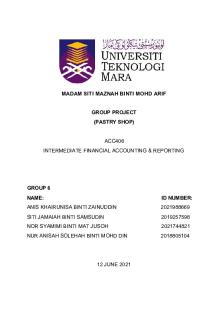
Group Project Account ( Group 6)
- 21 Pages

THE Benefits OF Lipstick
- 4 Pages
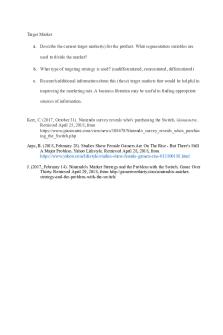
Group Project- Target Market
- 4 Pages
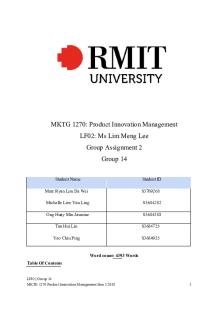
PIM Group Project 2
- 68 Pages
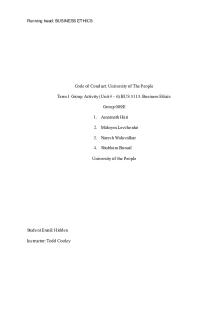
Group Project 009E Final
- 21 Pages
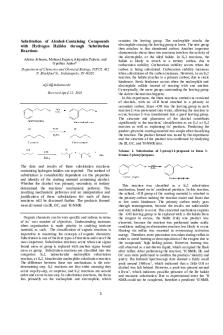
Group Project JOC Note
- 4 Pages

Group Project Proposal
- 1 Pages
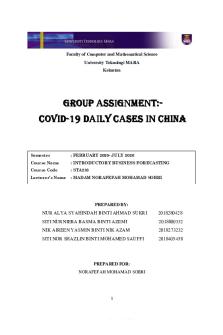
Group Project STA 233
- 33 Pages
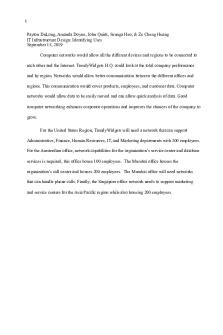
IST Group Project
- 19 Pages

Group project guidelines
- 1 Pages

group project sta108
- 55 Pages

CSR Group Project ASM401
- 18 Pages

MNT group Project
- 9 Pages

Victoria\'s Secret Group Project
- 11 Pages
Popular Institutions
- Tinajero National High School - Annex
- Politeknik Caltex Riau
- Yokohama City University
- SGT University
- University of Al-Qadisiyah
- Divine Word College of Vigan
- Techniek College Rotterdam
- Universidade de Santiago
- Universiti Teknologi MARA Cawangan Johor Kampus Pasir Gudang
- Poltekkes Kemenkes Yogyakarta
- Baguio City National High School
- Colegio san marcos
- preparatoria uno
- Centro de Bachillerato Tecnológico Industrial y de Servicios No. 107
- Dalian Maritime University
- Quang Trung Secondary School
- Colegio Tecnológico en Informática
- Corporación Regional de Educación Superior
- Grupo CEDVA
- Dar Al Uloom University
- Centro de Estudios Preuniversitarios de la Universidad Nacional de Ingeniería
- 上智大学
- Aakash International School, Nuna Majara
- San Felipe Neri Catholic School
- Kang Chiao International School - New Taipei City
- Misamis Occidental National High School
- Institución Educativa Escuela Normal Juan Ladrilleros
- Kolehiyo ng Pantukan
- Batanes State College
- Instituto Continental
- Sekolah Menengah Kejuruan Kesehatan Kaltara (Tarakan)
- Colegio de La Inmaculada Concepcion - Cebu